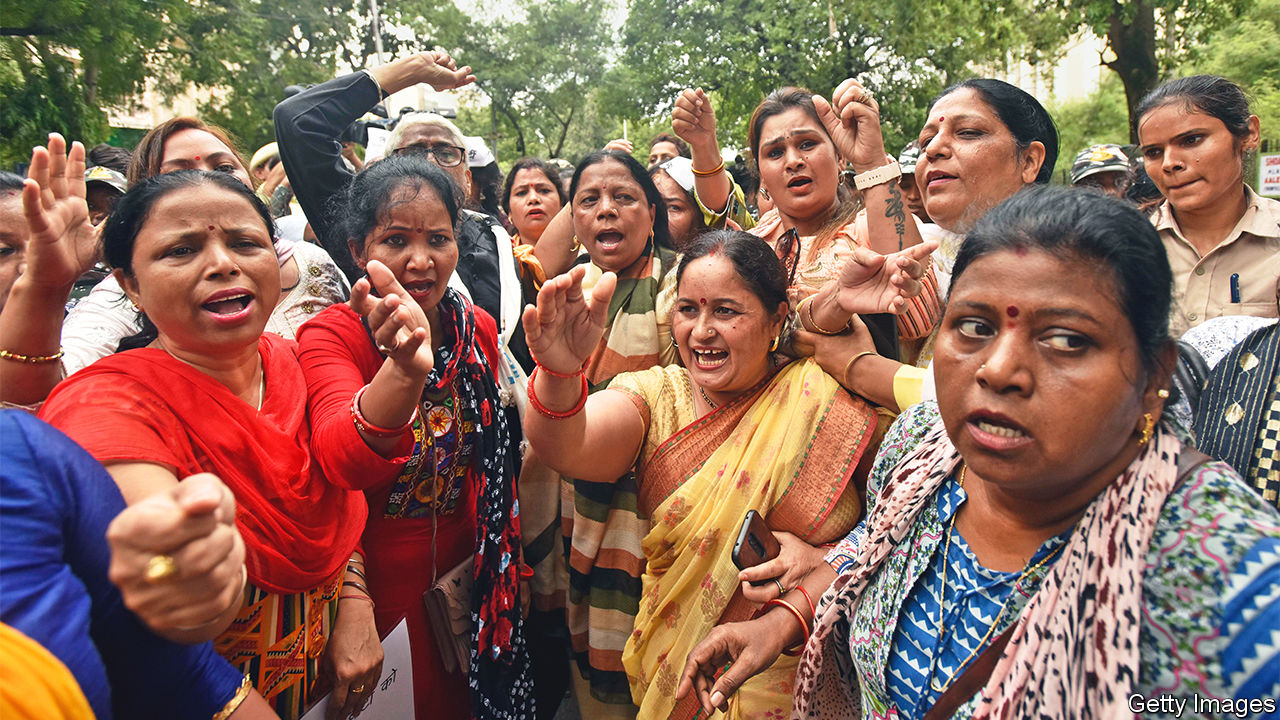On May 20, 2023, a 16-year-old girl was stabbed 21 times on a busy street in New Delhi, India. At one point, the knife was lodged into her skull, rupturing it. She was then bludgeoned with a cement block as passersby slowed, watched, and walked on. The entire scene was captured on CCTV.
In March 2021, a woman with a chronic brain tumor was stabbed to death by her husband in Mudgal, India. He was “fed up with her illness and medical treatment.”
And in November 2014, after suffering years of domestic abuse, a woman was doused with kerosene and lit on fire by her husband and mother-in-law in Bangalore.
These stories, while each unique and self-contained, are countless, and they all fit into India’s larger chronicles of femicide and gendered violence.
A 2005 study by Dr. Anvita Lakhani, an assistant professor of law at the City University of Hong Kong, reveals that bride-burning, a form of dowry-death in which a woman is burned by her husband or in-laws for her family’s refusal or inability to pay additional dowry, is as rampant in India as it was 2,500 years ago. Official figures from India’s National Crime Records Bureau show that 8,233 young women were killed in dowry deaths in 2012, and the situation is not improving. According to Jayna Kothari, a senior advocate at India’s Supreme Court, violence against women has only increased in the last decade. Recent figures from the National Crime Records Bureau show that crimes against women rose 87% between 2011 and 2021.
Many political scientists, including Ronald Inglehart in his book Cultural Evolution: People’s Motivations Are Changing, and Reshaping the World, have posited that as societies like India develop economically and grow in wealth, they become more tolerant of gender equality and social diversity. Some indicators appear to support this theory: as the poverty rate fell from 60% to 11% between 1981 and 2018, the female literacy rate in India rose from 25% to 66%, and the proportion of girls enrolled in secondary school increased by four times, closing the gender gap. Once we turn to other indicators, however, the story changes.
In Europe, dowries mostly disappeared with industrialization and the rise of working women. But while India outlawed dowries in 1961, it has, in fact, experienced an increase in the marriage-payment practice. Female labor force participation has also stayed low, decreasing from 28% in 1990 to 23% in 2021. Today, India ranks 127 out of 146 countries in the World Economic Forum’s Gender Gap Index.
Beneath these numbers lie patriarchal socio-political norms and practices that enable rampant gendered violence. For example, India’s structural gender-based inequality perpetuates cycles of violence against women. Of the very few incidents of violence against women that get reported to Indian authorities, few are recognized as “cognizable offenses.” Of the recognized cases, fewer still result in actual, timely, and enforced convictions. Many, instead, lead to society blaming the victims. The impunity enjoyed by perpetrators further endangers the women they abuse, and the threat of increasing or worsening attacks again deters women from reporting incidents.
Perhaps even more importantly, the discourse and practice of influential political elites are ingrained with gender-based prejudice. According to Dr. Angana Chatterji, an anthropologist from India and scholar at the University of California, Berkeley, “Such quotidian aggressions furnish agency for episodic and spectacular violences against women, trans women, and girls.”
India’s current ruling party, the right-wing, Hindu-nationalist Bharatiya Janata Party (BJP), is well known for its sexist language. One famous example occurred just after Kashmir, a region in India, lost its semi-autonomous status in 2019. In the aftermath, Vikram Saini, a BJP Member of the Legislative Assembly, said, “Muslim party workers should rejoice in the new provisions. They can now marry the white-skinned women of Kashmir.” Saini’s comment clearly objectifies women, speaking of them as spoils that have been won and with whom men can do what they wish. The language of the BJP is infused with its power, thus normalizing objectification and making it all the easier for femicide and gendered violence to continue.
Chatterji observes, “Femicide in contemporary India is powered through sexist and misogynist mores across social fault lines that normalize extraordinary discrimination, harm, and violence against women in family, society, political economy, and the law.”
These fault lines are drawn distinctly between men and women, the powerful and the powerless. Coincidentally, these fault lines are also a source of BJP power. The BJP is a culture-bound party. It feeds off of traditional patriarchal beliefs—the very same beliefs that enable femicide and gendered violence—meaning they have absolutely no political motivation to help end violence against women. On the contrary, it benefits from a continued culture of subjugation and abuse of women. In Chatterji’s words, “The systemic precarity organizing women’s lives is integral to the functioning of Hindu nationalist state power and enables the performative arsenal of male-dominance in India.”
Femicide and gendered violence are longstanding issues in India, exacerbated by the BJP, and there has been much discussion about how to resolve or mitigate India’s femicide epidemic. Some activists call for more transparent data on gendered violence, which could be used to advocate for policy changes. However, the underlying socio-political causes of the violence cannot be addressed by numbers alone.
The BJP, led by Prime Minister Modi, has been the source of massive crackdowns on freedom of speech. According to NPR and Amnesty International, it has been “increasingly imposing unlawful and politically-motivated restrictions on freedom of expression.” Chatterji herself, because of her scholarship on India unfavorable to its political elites, has been threatened by various Hindu nationalists and finds it difficult to travel back.
Freedom of expression is essential to the circulation and eventual acceptance of beliefs, such as those about gender equality and those against femicide and gendered violence. Without this freedom, it will be difficult to change the social and political norms that currently enable violence. Modi and the BJP, however, do not seem to have plans to lift the restrictions on free speech.
For their part, powerful Western democracies like the United States have done little to condemn Modi’s governance. When China or Russia take actions contrary to U.S. values or its agenda, the U.S. restricts passports, bans imports, or otherwise sanctions them. However, even as Modi attacked free speech among other democratic values, he was given the “red carpet treatment” in Washington when he met with President Biden. This was a warmer reception than was given to British Prime Minister Rishi Sunak just weeks prior: despite the US-Britain special relationship, Sunak received neither the state dinner nor the congressional speech that Modi received.
This favorable treatment of India, while likely stemming from a logical political agenda countering Russian and Chinese influence, outwardly endorses the BJP and Modi’s undemocratic method of governance, along with the patriarchal culture, femicide, and gendered violence that comes with it. Though it is unclear how exactly the U.S., or any democratic country, should address these issues, it is abundantly clear that there must be no more red carpet treatment. Changes must be made before more women and girls die of unjust femicide and gendered violence.
Featured Image Source: Sanjeev Verma/Hindustan Times via Getty Images






Comments are closed.